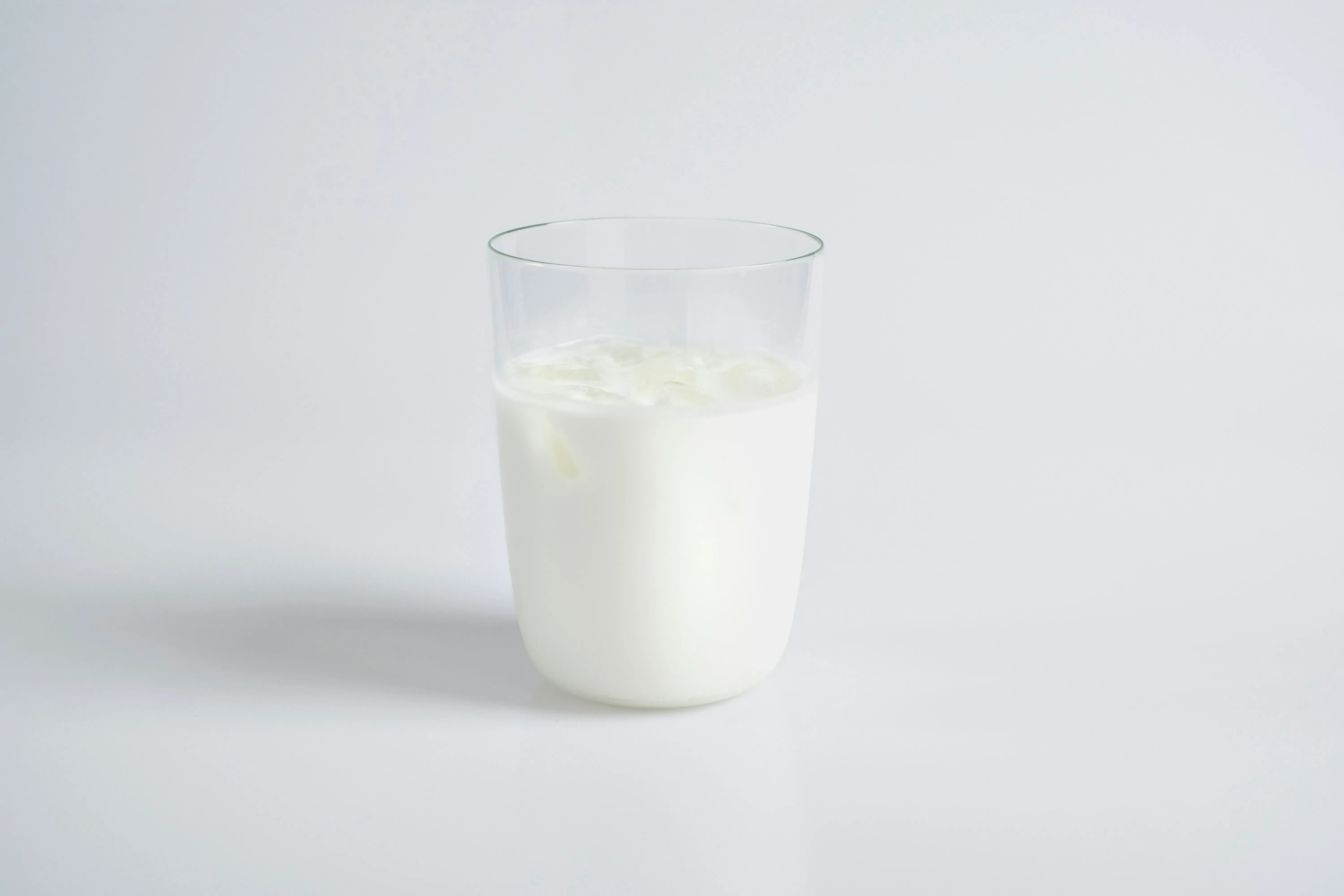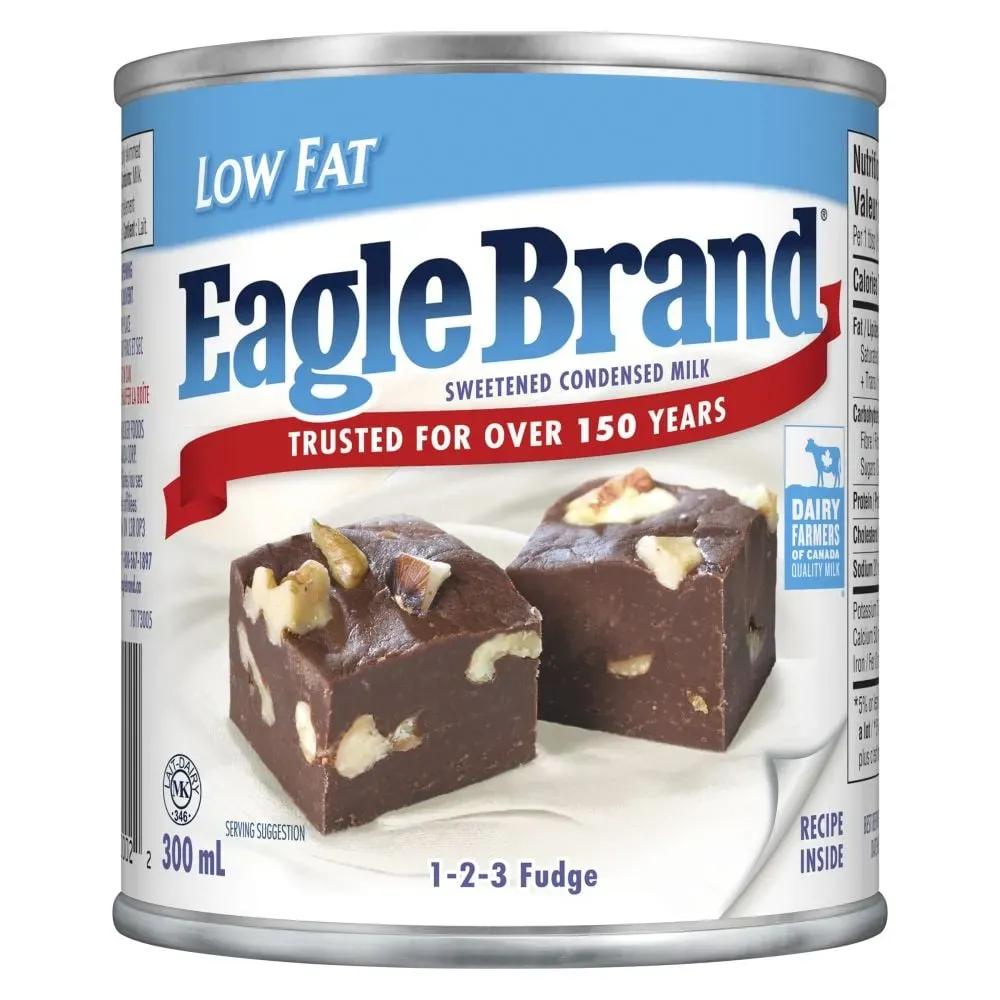Table of Contents
Love baking? Got a sweet tooth that just won't quit? We get it. That creamy, sweet drizzle is often the secret weapon in beloved desserts, but sometimes, you just wish it came with a little less baggage. You want the richness, the distinct flavor, but maybe not all the fat that typically comes with the traditional stuff. It's a common dilemma for anyone trying to balance enjoying life's little pleasures with keeping things a bit lighter.
What is Low Fat Sweetened Condensed Milk and Why Choose It?
What is Low Fat Sweetened Condensed Milk and Why Choose It?
The Sweet Scoop on What's Different
so you've seen the regular stuff, right? That thick, syrupy goodness that comes in a can, basically milk that's had most of its water evaporated, then loaded up with sugar. It's the backbone of countless desserts, giving them that signature creamy texture and intense sweetness. Now, imagine that, but someone took out a good chunk of the fat. That's essentially low fat sweetened condensed milk. It's not magic, just a tweak in the process, typically using nonfat or low-fat milk from the get-go before the sugar is added and the water is removed. The goal is to keep the sweetness and the thickening properties, which are crucial for baking, while cutting down on the fat content that's present in traditional versions made with whole milk.
Why Bother with the Low Fat Version?
Why pick the low fat option when the classic exists? Simple: calories and fat grams. Regular sweetened condensed milk is delicious, no doubt, but it's also a calorie and fat heavyweight. If you're trying to lighten up your favorite recipes without sacrificing the essential sweetness and structure that sweetened condensed milk provides, the low fat version offers a viable alternative. It lets you make those key lime pies, fudge batches, or sticky caramel sauces with a little less dietary impact. It's about having your cake (or pie, or fudge) and eating it too, just maybe a slightly less fatty slice. It maintains a similar texture and flavor profile, making it a fairly straightforward substitute in many applications, which is a huge win for anyone looking to make small, impactful changes in their baking.
- Less total fat compared to regular versions.
- Similar sweetness and thickening ability.
- Allows for lighter versions of classic desserts.
- A good option for those watching fat intake but still wanting sweetness.
Breaking Down the Nutrition of Fat Free Sweetened Condensed Milk
Breaking Down the Nutrition of Fat Free Sweetened Condensed Milk
Peeling Back the Label: What "Fat Free" Really Means
Alright, so you're grabbing that can of fat free sweetened condensed milk, and the big selling point is right there on the label: "Fat Free." This isn't just marketing fluff; it means exactly what it says – zero grams of fat per serving. For anyone trying to cut down on dietary fat, especially saturated fat, this is the main appeal. Compared to the traditional version, which can pack several grams of fat per serving, the fat-free option makes a significant difference in the overall nutritional profile of your baked goods or drinks. A typical serving, usually around two tablespoons, clocks in at about 110 calories. Most of those calories come directly from the sugar, which isn't exactly a shocker, but knowing the breakdown helps you decide where it fits into your day. It's a trade-off: you ditch the fat, but you're still getting a concentrated hit of sugar.
Beyond the Fat: Sugar, Carbs, and More
Now, while the fat is gone, the sugar certainly isn't. That's kind of the point, right? Sweetened condensed milk, fat-free or not, is fundamentally milk and a whole lot of sugar, with most brands listing around 25 grams of sugar per serving. This contributes to the roughly 25 grams of total carbohydrates. So, if you're managing sugar intake or counting carbs, this is where you pay attention. On the brighter side, it's made from milk, so you still get some benefits there. You'll typically find about 4 grams of protein per serving and often a decent amount of calcium, sometimes boosted with added Vitamin A palmitate. It's not a health food, obviously, but understanding these details helps you make informed choices about how and when to use it. It's a sweet tool in your baking arsenal, just one that requires a bit of nutritional awareness.
Nutrient (per 2 Tbsp) | Typical Amount |
|---|---|
Calories | ~110 |
Total Fat | 0g |
Saturated Fat | 0g |
Cholesterol | <5mg |
Sodium | ~50-60mg |
Total Carbohydrates | ~25g |
Dietary Fiber | 0g |
Total Sugars | ~25g |
Protein | ~4g |
Calcium | ~15% DV |
Finding Your Favorite: Brands and Varieties
Finding Your Favorite: Brands and Varieties
The Usual Suspects: Big Names in Low Fat Sweetness
When you start looking for low fat sweetened condensed milk, you'll likely run into a couple of familiar faces right away. Eagle Brand is probably the one most folks think of first, and they definitely have a fat-free version that's widely available. Nestle's La Lechera is another big player, especially popular in many kitchens, and they also offer a low-fat or fat-free option depending on where you're shopping. These brands have been around forever, so there's a certain level of trust that comes with grabbing one of their cans. They're usually easy to find in major grocery stores, sitting right next to their full-fat cousins. They aim to replicate the texture and sweetness you expect, just without the fat grams.
Beyond the Giants: Store Brands and Label Nuances
But it's not just the big names playing in this space. You might also find store brands offering their own take on low fat sweetened condensed milk. Sometimes these can be a bit more budget-friendly, which is always a plus. Just be mindful of the labeling – some might say "low fat," others "fat free." While both are reduced in fat compared to the original, "fat free" means essentially zero grams per serving, while "low fat" allows for a small amount. It’s worth a quick glance at the nutrition panel if you're aiming for the absolute lowest fat content. Availability of these smaller or store brands can vary a lot depending on your location, so you might need to hunt a little.
- Eagle Brand Fat Free Sweetened Condensed Milk
- Nestle La Lechera Fat Free Sweetened Condensed Milk
- Great Value (Walmart) Fat Free Sweetened Condensed Milk
- Kroger Brand Fat Free Sweetened Condensed Milk (or similar store brands)
Making Your Pick: What to Consider
So, how do you choose? Honestly, for many standard baking applications, the differences between brands of low fat sweetened condensed milk might be subtle. The primary difference is usually the sugar level and potentially slight variations in thickness or color due to processing. If you're working on a recipe where texture is absolutely critical, like a no-bake pie filling that relies heavily on the milk to set, you might find one brand works slightly better than another. Reading reviews online can sometimes give you a clue, but often it comes down to trying a couple and seeing which one you prefer or which is most readily available. Don't overthink it too much; they are designed to be substitutes, and most will perform admirably in place of the full-fat version.
Whipping Up Treats with Low Fat Sweetened Condensed Milk
Whipping Up Treats with Low Fat Sweetened Condensed Milk
Swapping It In: The Basics of Substitution
Alright, so you've got your can of low fat sweetened condensed milk, standing ready to replace the regular stuff. The good news? In most recipes, it's a straight swap, can-for-can. Since the water has been reduced and sugar added just like the full-fat version, it provides that necessary sweetness and thickening power that makes condensed milk so unique. You pour it in, mix it up, and generally, things work out. It integrates smoothly into batters, fillings, and sauces. Don't overthink the initial swap; the primary functional components – sugar and concentrated milk solids – are still there, just with less fat along for the ride. This makes it a remarkably easy way to shave off some fat grams without needing to completely re-engineer your favorite dessert.
Where Low Fat Sweetness Shines Brightest
So, where does this stuff really excel? Think no-bake desserts. Things like key lime pie filling, easy fudge, or ice cream bases that rely on sweetened condensed milk to set up beautifully. Because these recipes don't involve complex fat interactions during baking or candy making, the absence of fat is less likely to cause structural issues. It works wonderfully in simple sauces or stirred into coffee for a creamy, sweet kick. If your recipe primarily uses sweetened condensed milk for sweetness and body, the low fat version is almost always a solid choice. You get the desired flavor and texture without the added richness (and calories) of the full-fat counterpart. It's a simple change that can make your treats feel a little lighter.
- No-bake pies (like Key Lime or Chocolate Cream)
- Quick fudge recipes
- Homemade ice cream bases
- Sauces for drizzling over fruit or cake
- Sweetened coffee or tea drinks
Knowing When It Might Not Be Perfect
Now, let's be real. While low fat sweetened condensed milk is versatile, it's not a universal fix. Recipes where fat plays a critical role in texture, like certain types of caramels or candies that require specific crystallization or chewiness influenced by milk fat, might yield slightly different results. The mouthfeel can be a touch less rich than the full-fat version. If a recipe specifically calls for the fat content for structure or a certain creamy decadence that only fat provides, you might notice a difference. It's usually not a disaster, but the final product might not have that exact unctuous quality you're used to. For the vast majority of home baking and dessert making, though, it performs admirably.
Sweet Endings Start Here
So there you have it. Swapping in low fat sweetened condensed milk isn't some culinary compromise; it's a practical choice for enjoying the creamy, sweet goodness you love in desserts and drinks, just with a lighter touch on the fat content. We've seen it's more than just a label – it offers a different nutritional profile, making those indulgent moments feel a bit less heavy. Whether you're baking up a storm or just adding a swirl to your coffee, this option lets you keep your favorite sweet traditions alive without the full-fat commitment. Give it a try in your next recipe and taste the difference for yourself.
